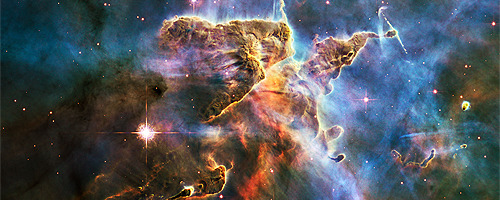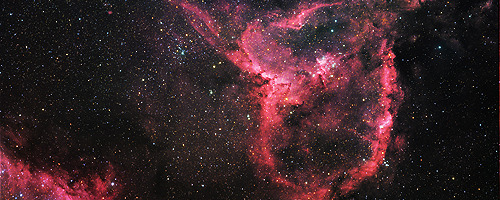Practise What You Preach

Practise what you preach
More Posts from Study-astronomy-biology-ref and Others
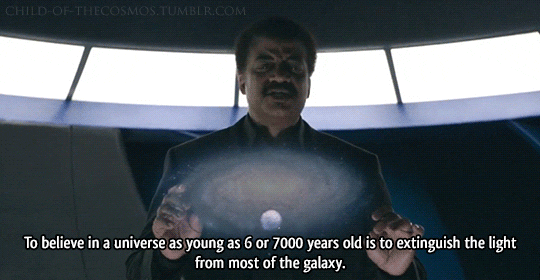

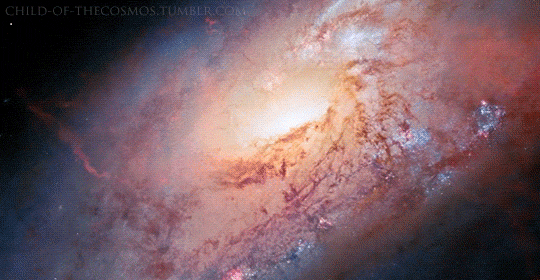


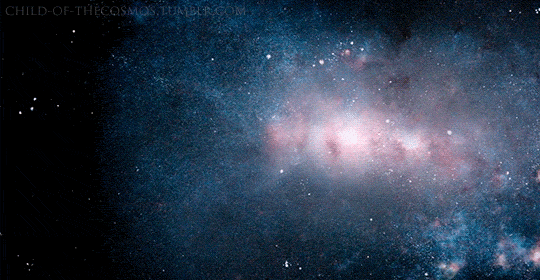
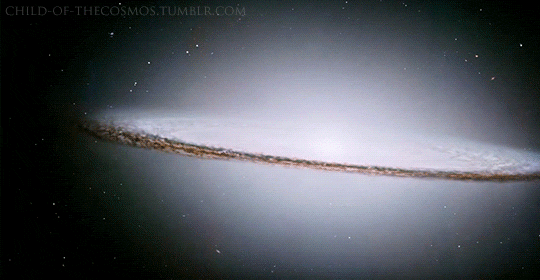
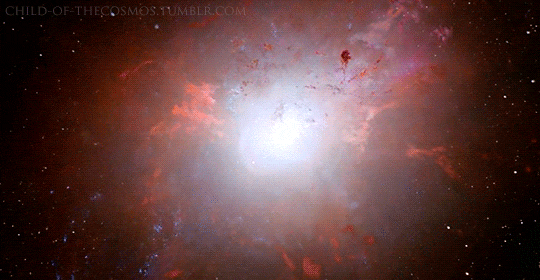
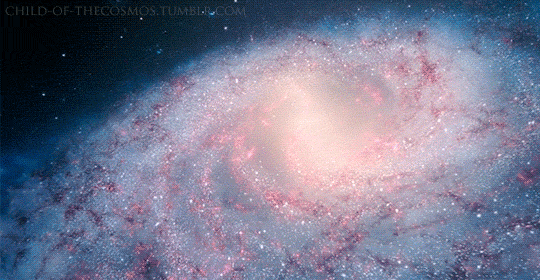
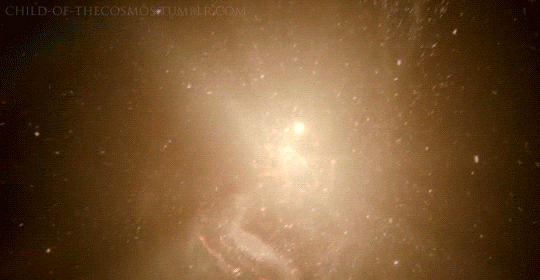
The Light Year: Part 3 of 3 (Part 1, Part 2) Episode 5: A Sky Full of Ghosts, Cosmos: A SpaceTime Odyssey

Hi all! Grace here.
I am not yet studying Anatomy and probably won’t until next year, but I decided to look up sources relating to Anatomy and gather them here for future reference! I will be adding more to it as I find more. If you are currently studying Anatomy or already have, please let me know if there were sources you are using/did use that were/are helpful so I can add them! :)
Nurse Journal
Human Body Images
Gross Anatomy
E-Skeleton
Human Anatomy
Introduction to the Human Body
Digestive System: The Inside Story
Body Parts Game
The Immune System
Human Anatomy Learning Modules
The Respiratory System
Anatomy of the Eye
Digestive Disorders and Anatomy
Anatomy Flashcards
Human Anatomy and Physiology
Blood Type Lesson Plan
Introduction to Human Genetics
Anatomy of the Human Brain
Heart Anatomy
Anatomy of the Lungs
NYU Virtual Microscope
Muscle Quizzes
Parts of the Brain
Dermatology Glossary
Interactive Body Games
Anatomical Images
The Bone Box
Muscles of the Body
Anatomy and Physiology Course
Human Body Maps
The Digestive System
Interactive Case Studies
Online Biology Book
Radiographic Anatomy
Body Guide: Skin
Immunity Guide
Anatomy Self-Test
I hope this is helpful! x










Photographing the Milky Way Over Greece
Alexandros Maragos is an Athens based filmmaker and photographer best known for his landscape photography, astrophotography and timelapse imagery. In his own words:
The Milky Way is the name of the spiral galaxy in which our solar system is located. It is our home in space. The Earth orbits the Sun in the Solar System, and the Solar System is embedded within this vast galaxy of stars. In the northern hemisphere, the Milky Way is visible in the southern half of the sky. This makes Greece one of the best places in the world to see and photograph the galaxy because of the country’s geographic location in Southern Europe at the crossroads of Europe, Asia, and Africa.
As a filmmaker and photographer I feel very fortunate to live here. Every time I want to shoot the night sky, all I do is to pick a new spot on the map and just go there and take the shot. Greece is a heaven for astrophotography. Whether you choose a mountain, a beach, a peninsula or any of the 6,000 islands, the Milky Way is always visible in the southern sky.
To see more of his work visit his website or follow him on Facebook, Twitter, or Instagram.
Images and text via
Wow this is really cool! Love the amount of efforts put into this!
Animal/Bio-Diversity Facts!
I combined these two topics because there’s a lot of overlap, and I decided that taking notes on both really helped me understand what the other is trying to say. This will be a long post, strap yourself in.
Organisms are organized and classified via a system known as Taxonomy. This system was developed by a scientist named Carl Linnaeus. To identify individual organisms, binomial nomenclature is used. What this means is each organism is called by their genus and species name. For example, Homo sapien, Pyrrhura molinae, (Green cheek conure), and Betta splendens.
There were originally 6 taxa or levels of organization developed by Linnaeus; kingdom, phylum, class, order, family, genus, and species. The 20th century saw many changes to Linnaeus’ original system of organization. The 3 original kingdoms were expanded to 5; Monera, Protista, Fungi, Plantae, and Animalia, a 6th, Archaebacteria was added to represent extremophiles that were so intense they had to be separated from bacteria to give their coolness more merit.
Today’s scientists added a 7th level, domain. We use a 3-domain system based on DNA analysis. These domains are eukarya, bacteria, and archaea. Monera stopped being used as the prokaryotes were split between bacteria and archaea. Archaea are in fact, not bacteria, and so were given their own domain.

Here are some characteristics shared among members of the same domain:
Bacteria
All members of this domain are unicellular prokaryotes. This means that they lack internal membranes, like a nucleus, mitochondria, or chloroplasts)
Some are anaerobic (metabolize without oxygen) some are aerobic (metabolize with oxygen)
In the environment, some are decomposers, meaning they decompose and recycle dead organic material.
Some are pathogens, such as some strains of E.coli.
Speaking of E.coli, they also play a vital role in genetic engineering. E.coli is used to manufacture human insulin
Some reproduce using conjugation. This is a primitive process, where individuals exchange genetic material
They have a thick and rigid cell wall
Some, like blue-green algae, are autotrophic (make their own food) others are heterotropic (depend on complex organic substances for food)
Have no introns (noncoding segments of DNA)
Archaea
Also unicellular prokaryotes
Include extremophiles, which are organisms that live in extreme environments. Some examples are Methanogens (obtain energy by producing methane from hydrogen) Halophiles (thrive in extremely salty environments, such as the Dead Sea) and Thermophiles (thrive in extremely high temperatures, like Yellowstone’s hot springs)
Have introns present in some of their genes
Eukarya
Have a nucleus and internal, membrane-bound organelles
Include: Protista, Fungi, Plantae, and Animalia
Moving into kingdoms, there are 4. These are the 4 mentioned above, fungi, Protista, Plantae, and Animalia. Here are some traits for each:
Protista
Most are unicellular, however, some are primitive multicellular organisms.
Include both heterotrophs (like amoeba, and paramecium) and autotrophs (like euglenas)
Move using different structures, such as pseudopods in amoeba, cilia in paramecium, and flagella in euglenas.
Include organisms not cool enough to sit with the fungi or Plantae kingdoms, like seaweed and slime mould.
Some, like algae and paramecium, carry out conjugation
Some can cause serious diseases like amoebic dysentery and malaria
Fungi
All are heterotrophic
Include unicellular and multicellular organisms
Able to digest extracellularly by secreting hydrolytic enzymes, and absorbing the nutrients via diffusion.
Are essential to the environment, as they are decomposers. They are saprobes, which mean they eat decaying organic matter.
They have cell walls, however, unlike plants whose cell walls are made of cellulose, their cell walls are made of chitin.
Lichens are fungi and algae living in a mutualistic, symbiotic relationship. Lichens are strong enough to withstand harsh, unforgiving environments, thus are often the pioneer organisms (the first to colonize a new environment).
They reproduce asexually by budding, like yeast, spore formation, like bread mould, or fragmentation (aka 1 parent breaks itself into several, living pieces), however, some can reproduce sexually.
Plantae
All are multicellular, nonmotile, and autotrophic.
Their cell walls, as mentioned above, are made of cellulose.
Plants can create their own food by photosynthesis, which uses chlorophyll a and b.
Their carbohydrates are stored as starch
They reproduce sexually by alternating between the gametophyte and sporophyte generations.
Some (tracheophytes) have vascular tissue while others (bryophytes) do not.
Animalia
All are heterotrophic, multicellular, and motile
Most reproduce sexually with a dominant diploid (2n) stage
In most, a sperm with a flagellum fertilizes a large, nonmotile egg.
Animals are classified, traditionally based on anatomical features (homologous structures) and embryonic development.
There are 35 phyla. Since I want to eat something today, I’ll go over the 9 the Barron’s SAT book describes, which are Porifera, cnidarians, Platyhelminthes, nematodes, annelids, molluscs, arthropods, echinoderms, and chordates.
Each animal phylum represents the evolution of a new, successful body plan. Some of these trends include specialisation of tissues, germ layers, body symmetry, the development of a head end, and body cavity formation.
Specialized cells, tissues, and organs
The cell is the basic unit of all life, for example, fat cells. Tissue is the next block up and is a collection of tissues performing a function, such as adipose tissue. An organ is a group of tissues working together to perform a similar function. For example, the brain.
Organisms making up the phylum Porifera, like sponges are made of a loose confederation of cells. Since those cells are not specialized, they are not considered tissue. These cells can react to stimuli, however, lack muscle or nerve tissue.
Organisms making up the phylum cnidaria possess tissue, however the most primitive and simple form of tissue. However, no organs. Flatworms do have organs, however, lack an organ system. Annelids, however, possess a full organ system.
Germ Layers
Germ layers make up the tissues and organs of the body. They form early in embryonic development. There are 3 kinds, however, not all organisms have all 3.
Ectoderm- outermost layer, makes up skin and nervous system
Mesoderm- middle layer, becomes blood, muscles, and bones
Endoderm- innermost layer, makes up the viscera (guts)
Porifera and cnidarians only have 2 layers. They lack mesoderm and instead have mesoglea or middle glue which holds the 2 layers together. Organisms that have 3 true germ layers are called triploblastic.
Body Symmetry
Most primitive animals exhibit radial symmetry. More complex animals exhibit bilateral symmetry. This is displayed in the drawings below. Echinoderms are a key exception to this rule. They develop with bilateral symmetry, however, as an adult, they exhibit radial symmetry. In bilateral symmetry, the body mirrors itself along the left and right on the longitudinal axis.

This also means that Patrick Star is not drawn biologically accurate. Shame.
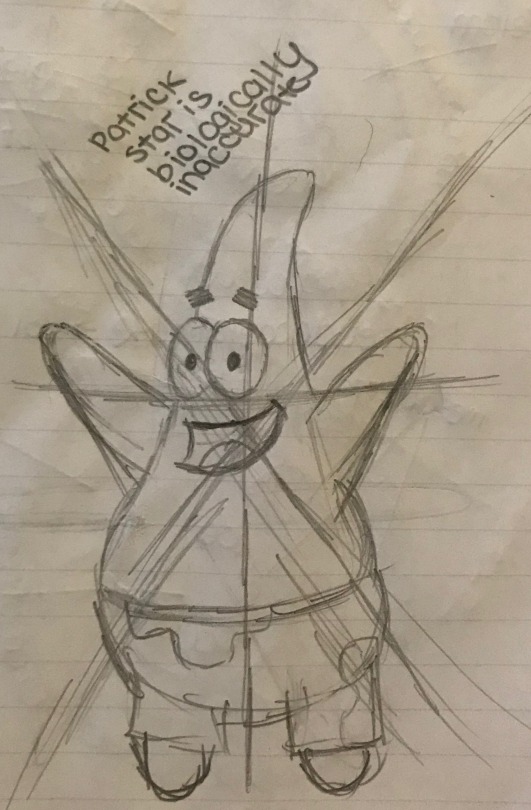
Body Cavity Formation
The coelom is a fluid-filled body cavity, completely surrounded by mesoderm tissue. It is found only in more evolutionarily advanced organisms. Organisms like flatworms, who lack a coelom are known as acoelomates. Organisms, like nematodes or roundworms, who have a fluid-filled tube between the endoderm and mesoderm, functioning as a hydrostatic skeleton, are known as pseudocoelomates. Coelomates are organisms with a true coelom. Annelida, Mollusca, Arthropoda, and Chordata are all phyla that have this structure.

Development of a Head (Cephilization)
Organisms that developed bilateral symmetry also have an anterior and posterior end. (The head and rear end). The sensory apparatus and brain, or ganglia in less developed organisms are organized on the anterior end, while digestion, excretion, and reproduction all keep their organs on the posterior end. Cephilization began with flatworms.
Here is a cladogram to help visualize when different traits developed.

Traits of 9 different phyla:
Porifera:
No symmetry at all
No nerve or muscle tissue, sessile (nonmotile)
Filter nutrients from water drawn into a central cavity
Like many other primitive organisms, they only have 2 cell layers, ectoderm and endoderm, with the noncellular mesoglea holding them together
They have specialized cells, however, there is no organization to the cells, therefore they do not have tissue or organs.
Evolved from colonial organisms: fun fact, you can push a sponge through a cheesecloth, which will separate into individual cells, all and become a sponge. This is related to how a sponge reproduces
They reproduce asexually via fragmentation, meaning each piece that is separated has the necessary cells to become an individual organism. This means that technically,

Spongebob is reproducing here. Good on him.
They also reproduce sexually. They are hermaphrodites, meaning that they have characteristics of both males and females.
Cnidarians
Include organisms like hydra and jellyfish
Radial symmetry
Body plan is a polyp (vase-shaped, like hydra) which is mostly sessile or medusa (upside-down bowl-shaped, like jellyfish) which is mostly motile.
Life cycle- although there are exceptions, some go through a planula larva (free-swimming) stage, then proceed to their reproductive stage, that being asexual (polyps, ) or sexual (medusas)
Only have ectoderm and endoderm cell layers
Have a gastrovascular cavity where extracellular digestion occurs. They only have one opening to this cavity, so waste and food both go through the mouth.
Have lysosomes where intracellular digestion occurs.
No transport system, since each cell is in contact with the outside environment.
All have stinging cells (cnidocytes) for protection, with nematocysts, which are stingers.
Platyhelminthes
Include organisms like flatworms like tapeworms
These are the most simple organisms with bilateral symmetry, an anterior end, and 3 distinct cell layers (ectoderm, endoderm, and mesoderm… yay bones muscle and blood!)
The digestive cavity has only 1 opening for egestion and ingestion, like cnidaria, so food can’t be continuously processed.
Their body is solid and has no room for a true digestive and respiratory system to circulate food or oxygen. The solution to this problem was to develop an extremely flat and thin body that allowed most of their body cells to have contact with the outside and thus exchange nutrients and waste via diffusion.
Nematodes
Include roundworms like pinworms
Unsegmented worms with bilateral symmetry, but very little sensory apparatus.
A large majority of them are parasitic. Trichinosis is caused by the worm Trichinella, which is often found in uncooked pork.
C. elegans is often used as an animal model when studying genes and embryonic development.
Digestive tract is two way, meaning they have a mouth and an anus
Annelids
Include earthworms and leeches
Segmented worms with bilateral symmetry, and very little sensory apparatus.
Two-way digestive tract, and a tube within a tube, consisting of a crop, gizzard, and intestine.
They have a nephridium, which is a tubule responsible for the excretion of nitrogen waste, urea.
They have a closed circulatory system and a heart with 5 pairs of aortic arches
Diffuse oxygen and carbon dioxide through their moist skin
Hermaphrodites
Mollusca
Include squids, octopi, slugs, clams and snails.
Have soft bodies, protected by hard calcium shells
They have open circulatory systems. This means they don’t have capillaries, however, have blood-filled spaces called hemocoels, or sinuses.
Have bilateral symmetry and 3 distinct body zones: The head-foot, with sensory and motor organs, Visceral mass, with organs of digestion, excretion, and reproduction, and the mantle, a specialized tissue that surrounds the visceral mass and produces the shell.
They have something known as a radula, which is moveable and has teeth, that behaves like a tongue.
Many have gills and nephridia
Arthropods
Include insecta (like grasshoppers), crustacea (like shrimp and crabs), and arachnida (like spiders and scorpions
Have jointed appendages
Segmented into head, thorax, and abdomen
Contain more sensory apparatuses than annelids which means they can move much more freely
Have an exoskeleton made of a polysaccharide known as chitin.
They also have an open circulatory system, with a tubular hard and hemocoels
For excretion, they have structures known as Malpighian tubules, which remove the nitrogenous waste; uric acid.
They have air ducts known as trachea which bring air from the environment into hemocoels.
Echinoderms
Include sea stars and sea urchins.
Most are sessile, or slow-moving (so stop judging Patrick. It’s just how he was born)
They are an exception to the bilateral symmetry rule. As embryos, they have bilateral symmetry, however, as they develop, they develop radial symmetry. This evolved for their sedentary lifestyle.
They have a water vascular system, which creates hydrostatic support for their tube feet which allow for locomotion
They reproduce sexually via external fertilization
They also have the ability to reproduce asexually via fragmentation, and regeneration. As long as the new sea star has part of the central canal, it will become a new organism.
They have an endoskeleton with calcium plates. Endoskeletons grow with the body, as opposed to exoskeletons that have to be shed
Chordates
Include vertebrae (like us!)
Chordates have a notochord which is a rod that extends the length of the body and is a flexible axis.
They have a dorsal, hollow nerve cord
The tail is responsible for movement and balance. We, humans, have a coccyx, which is a vestige of what was once our tail. Hence the name, tailbone.
Birds and mammals are homeotherms, meaning they are able to maintain consistent body temperature. The other chordates, like fish, reptiles, and amphibians are cold-blooded.
Let’s get specific, with mammals (because mammals are a superior class of animals. I would know, I am one.)
Mammals are named after their mammary glands. These glands let mothers provide milk to their babies.
They all have hair or fur
They are endotherms, meaning they generate their hair from within
Most are placental mammals, also known as eutherians. The embryo develops internally in a uterus connected to the mother via a placenta. Since the embryo is unable to perform essential functions such as digestion and excretion by itself, until late into the pregnancy, the placenta diffuses nutrients in and waste out for the baby.
Marsupials are an interesting class of animals. Their babies are born extremely early in development (after about 36 days), however, the mother has a pouch, where the baby will nurse until around 9 months.
Most mammals give birth to live young. There are exceptions to this rule, as our favourite egg-laying mammal of action’s theme explained to us. (Dooby dooby dooa dooby dooby dooaa AGENT P!)
Platypi and spiny anteaters derive their nutrients from a shelled egg.

Getting even more specific, let’s talk about primates. These are the least superior mammals. I should know. I am one.
Primates were descendants of insectivores. They have dexterous hands, and opposable thumbs, which allow their hands to perform fine motor tasks. Instead of claws, they have nails
Their hands contain many nerve endings, making them very sensitive (which is why papercuts are so agonizingly painful.) Their eyes are forward-facing and close together. This allows face to face communication. Close eyes allow for overlapping fields of vision, increasing depth perception and hand-eye coordination.)
Primates engage in the most intensive parenting out of any mammal. They tend to have single births and build strong bonds with their young.
The book organized 3 different organisms based on their taxonomy. I put that down and added rats because rats are cool. Don’t @ me.

Cladograms
Cladograms are an extremely useful tool to show how organisms evolved different traits over time. There is a more complicated one above, however, the book included an extremely simplified one also that helped me understand how these graphs are made, so I will include that here as well.
First, like any graph, a table is made detailing the data that will be graphed. In this case, this data will be the specific organisms (cats, lizards, salmons, and earthworms) and the existence of specific traits (backbone, legs, and hair.)
Then a line is drawn, showing each trait as it developed, following by the organism with that trait.

What this graph shows is that cats and lizards are more related than lizards and earthworms, etc. Tldr; a cladogram/phylogenetic tree draws distinctions between shared traits (traits different organisms have in common) and derived traits (traits that the ancestor did not have) displayed in such a way so as to show the evolutionary history of a group of organisms.
So what qualifies an animal? Animals are multicellular eukaryotes. They are all heterotrophs, meaning they acquire nutrients via ingestion. (Unlike plants, which manage to get nutrients through photosynthesis, such as the Calvin Cycle which produces a plants sugar.) All animals can move in some form.
Movement is a broad term. Beating cilia, and waving tentacles both count as movement. The movement that often comes to peoples minds, however, is locomotion, which is the movement from place to place. Some animals are sessile, which means they lack the capability to move from place to place. Hydra can still wave their tentacles (in the air like they just don’t care). Sponges are an interesting case, as many legitimately, cannot move.
Above, I mentioned terms like endoskeletons, exoskeletons, and hydrostatic skeletons. Hydrostatic skeletons are closed body compartments filled with fluid, that provide support. Exoskeletons are external, nongrowing skeletons, made of chitin (which also makes up the cell walls of fungi). Endoskeletons are internal skeletons made of bone and cartilage that grow with the organism. They are connected to each other at joints via ligaments, and to skeletal muscles (voluntary muscles) via the tendons.
All life has the ability to maintain homeostasis. Life survives within a narrow temperature range, from around 0 degrees Celsius to around 50 degrees celsius. In the ocean, this was not a massive problem, as it is the most stable environment temperature-wise, as water is able to absorb a lot of heat. However, the land is a lot more crazy. Different organisms found different ways to adapt and survive.
For example, a jackrabbit’s ears are a major tell about what climate they live in. Jackrabbits that survive in the cold have small ears to minimize heat loss. Jackrabbits living in the heat have large ears that allow heat to dissipate, filled with small capillaries making the ears appear pink.
Huddling, basking, panting and sweating, swarming, and shivering are all examples of adaptations different organisms use to survive in extreme temperature. Depending on whether an organism is an ectotherm or endotherm, their temperature regulation will be different. An ectotherm is heated from the outside. For example, crocodiles bask in the warm sun to heat their bodies up. Endotherms or homeotherms generate their heat from the inside by using large quantities of energy. For example, a litter of cold puppies will huddle together and with their mother, as their warmth, and their mothers warmth help heat them up.
Excretion refers to the removal of metabolic waste, such as excess water, carbon dioxide, and nitrogenous waste. There are 3 different kinds produced by different organisms
Ammonia
Ammonia is soluble in water and extremely toxic. Anybody who takes proper care of a fish tank is aware that cleaning the ammonia from their tank is essential in keeping their fish healthy.
Excreted mainly by marine life, like hydra and fish.
Urea
Not as toxic as ammonia
Excreted by earthworms and humans (urine contains urea and water)
In mammals, the liver is responsible for turning ammonia into urea.
Uric Acid
A paste-like substance that isn’t soluble, and not very toxic
Excreted by insects, many reptiles, and birds, and allow for the preservation of water.
Different organisms have different structures that allow for excretion.
Hydra excretes ammonia with no aid from any excess structure.
Platyhelminthes have flame cells that help them excrete ammonia
Earthworms have nephridia (metanephridia) to excrete Urea
Insects have Malpighian tubules to excrete uric acid
Humans have nephrons to excrete urea.
Following up, let’s look at 3 different organisms and the characteristics that make them unique!
Hydra (from Cnidaria)
Hyrda digest their food in the gastrovascular cavity. They, unfortunately only have one hole, where food goes in and waste comes out. The gastrodermis (gastrovascular cavity lining, or gastrocoel) secrete digestive enzymes to help extracellular digestion progress. Lysosomes, which are found in animal cells are responsible for intracellular digestion.

Hydra reproduces asexually by budding. A bud is a genetically identical, but tiny little hydra that grows within or on the parent.
Earthworms (From Annelida)
The digestive system of earthworms is much more complex than that of the hydra. Luckily, they have a mouth and an anus. The mouth ingests decaying organic matter along with the soil. The food travels down the oesophagus into the crop. The crop stores the food until it is ready to be digested. The food then moves into the gizzard, with thick muscular walls that digest the food mechanically, with the aid of the ingested sand and soil. The food moves into the intestines, where chemical digestion occurs. The intestine has a large fold, called the typhlosole, which increases the surface area.

Worms don’t have a traditional respiratory system. Instead, gas is exchanged by diffusion, through moist skin. This type of respiratory system is called an external respiratory system. Their hearts have 5 aortic arches that pump blood. Worms have capillaries, giving them a closed circulatory system. Their blood contains haemoglobin, making it red. Earthworms have nephridia, excreting urea, and are hermaphrodites. A worms brain is made of two dorsal, solid, fused ganglia, with a solid, ventral, nerve cord.
Grasshoppers (From Arthropoda)
Grasshoppers also have a digestive tract consisting of a crop and gizzard. They also have mouthparts specialized for tasting, biting, and crushing food, and their gizzard has chitin plates that aid in mechanical digestion. Their digestive tract contains Malpighian tubules that remove nitrogenous waste in the form of uric acid. (No, I did not draw a grasshopper. I know when I am defeated.)
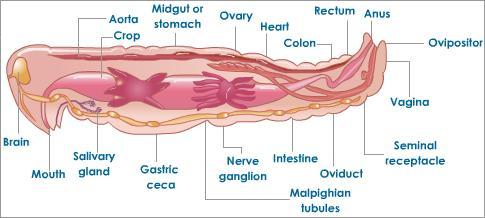
Grasshoppers have a similar nervous system to worms, however, they have an open circulatory system. They lack capillaries, and blood moves through hemocoels instead. Arthropod blood has no haemoglobin. They have an internal respiratory surface because gas exchange occurs on the inside. They have a system of tracheal tubes that lead to the hemocoels. Oxygen is carried by hemocyanin, with copper as the core atom. This is why molluscs and insects have blue blood.









On October 8 a privileged few could see auroras in abnormally low latitudes, as the spectacular pictures above taken in Wales and Northern England.
Via TON: Northern Lights Put On Spectacular Show As Aurora Borealis Lit Skies Over Wales And Yorkshire.
Yes! It’s not ~very~ legal, but I think this is very important to know if you gonna do research.
I also read somewhere saying that if you have this kind of issue and you aren’t really in a rush, you could reach out to the people that did the research and ask them for the article! We all have the same problem with publication sites and most people just want their research to be known and cited. They would love to help you too, we’re all scientists after all. I, personally, haven’t tried this yet since I’m currently not doing any research, so I’m not 100% sure about the success probability. But hey, it worth a shot I have to say.
I havent seen anyone talk about this yet so im making a post.
So lets say you’re researching something for a paper (or just for fun) and the research paper you want to read is behind a paywall, or the site makes you create an account first, or makes you pay to download, or limits you to only 5 free articles, or otherwise makes it difficult for you to read what you want.

do not fear! copy the link to the article

go to sci-hub.se (the url is always changing so its best to check out whereisscihub.now.sh to find what the current url is)

slap the article link in there

bam! free access!

The Earth from Russia’s Elektro-L satellite
This image compilation, comprised of images taken by the Russian Elektro-L weather satellite, was taken from a geostationary orbit at a distance of 36,000 km. It shows the changing illumination of Earth as it rotated on the autumnal equinox and illustrate the concept of a geostationary orbit. At this height, the satellite is orbiting at fast as the earth is spinning and stays in the same location relative to the surface of earth.
Credit: Vitaliy Egorov
-
 midnightai liked this · 5 years ago
midnightai liked this · 5 years ago -
 whatthehellismynameagain liked this · 5 years ago
whatthehellismynameagain liked this · 5 years ago -
 horolololz reblogged this · 5 years ago
horolololz reblogged this · 5 years ago -
 pandameatbun liked this · 5 years ago
pandameatbun liked this · 5 years ago -
 myfandomsarelife liked this · 5 years ago
myfandomsarelife liked this · 5 years ago -
 apieters liked this · 5 years ago
apieters liked this · 5 years ago -
 lonely-girl360 liked this · 5 years ago
lonely-girl360 liked this · 5 years ago -
 fuck-a-duck-ormaybedont liked this · 5 years ago
fuck-a-duck-ormaybedont liked this · 5 years ago -
 daddyslilmonsterbabygirl-blog liked this · 5 years ago
daddyslilmonsterbabygirl-blog liked this · 5 years ago -
 diverse-inspirations reblogged this · 5 years ago
diverse-inspirations reblogged this · 5 years ago -
 rajmachaval liked this · 5 years ago
rajmachaval liked this · 5 years ago -
 hellish-asshole liked this · 5 years ago
hellish-asshole liked this · 5 years ago -
 raven-of-hades liked this · 5 years ago
raven-of-hades liked this · 5 years ago -
 wild-tea-rose liked this · 5 years ago
wild-tea-rose liked this · 5 years ago -
 experimentalgirl42 liked this · 5 years ago
experimentalgirl42 liked this · 5 years ago -
 caregiver-lunar-space reblogged this · 5 years ago
caregiver-lunar-space reblogged this · 5 years ago -
 spacefleet501 liked this · 5 years ago
spacefleet501 liked this · 5 years ago -
 cookiecandy22 liked this · 5 years ago
cookiecandy22 liked this · 5 years ago -
 kayhoneylemons liked this · 5 years ago
kayhoneylemons liked this · 5 years ago -
 my-usernamewontwork liked this · 5 years ago
my-usernamewontwork liked this · 5 years ago -
 thisisastudyblogxx liked this · 5 years ago
thisisastudyblogxx liked this · 5 years ago -
 teenage-gal-blog liked this · 5 years ago
teenage-gal-blog liked this · 5 years ago -
 mistyyhaze liked this · 5 years ago
mistyyhaze liked this · 5 years ago -
 sleepingdeath-main liked this · 5 years ago
sleepingdeath-main liked this · 5 years ago -
 psyk0-w01f liked this · 5 years ago
psyk0-w01f liked this · 5 years ago -
 frogstud liked this · 5 years ago
frogstud liked this · 5 years ago -
 twoandahalfsouls liked this · 5 years ago
twoandahalfsouls liked this · 5 years ago -
 jazmynmoon liked this · 5 years ago
jazmynmoon liked this · 5 years ago -
 sunflowertea23 liked this · 5 years ago
sunflowertea23 liked this · 5 years ago -
 woahman420 liked this · 5 years ago
woahman420 liked this · 5 years ago -
 izimthevkookshipper liked this · 5 years ago
izimthevkookshipper liked this · 5 years ago -
 pasta-hobo liked this · 5 years ago
pasta-hobo liked this · 5 years ago -
 haephestus-daughter99 liked this · 5 years ago
haephestus-daughter99 liked this · 5 years ago -
 unlikelylightloverhuman liked this · 5 years ago
unlikelylightloverhuman liked this · 5 years ago -
 westernwitchy75 liked this · 5 years ago
westernwitchy75 liked this · 5 years ago -
 tea-and-crafts liked this · 5 years ago
tea-and-crafts liked this · 5 years ago -
 study-astronomy-biology-ref reblogged this · 5 years ago
study-astronomy-biology-ref reblogged this · 5 years ago -
 pumpkinphilcharlie liked this · 5 years ago
pumpkinphilcharlie liked this · 5 years ago -
 cybergee liked this · 5 years ago
cybergee liked this · 5 years ago -
 jxkr14-blog liked this · 5 years ago
jxkr14-blog liked this · 5 years ago -
 teacupofhappiness reblogged this · 5 years ago
teacupofhappiness reblogged this · 5 years ago

This is a studyblr for everyone have some passion for science, especially astronomy and biology
129 posts


